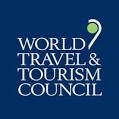Governments need to increase people’s freedom to travel : WTTC

London : Travel & Tourism contributes 9.5 percent to the global economy in 2013 according to The World Travel & Tourism Council (WTTC).
Travel & Tourism’s contribution to the world economy has grown for the fourth consecutive year and is expected to show even stronger growth in 2014. But policies need to be implemented to increase tourism receipts and jobs according to The World Travel & Tourism Council (WTTC) annual economic impact data .
WTTC is the global authority on the social and economic impact of Travel & Tourism. David Scowsill, President and CEO of WTTC, says it has been another really good year for the sector but many governments’ lack of openness is restraining their country’s Travel & Tourism potential; “The data underlines Travel & Tourism’s undeniable status as a driver of growth. Some countries have taken huge positive strides with visa facilitation over the past few years. But many countries’ economic contribution from Travel & Tourism is still being held back, particularly due to restrictive visa policies”.
Research from WTTC and the UN World Tourism Organisation (UNWTO) in 2012 demonstrates that improving visa processes could generate an additional US$ 206 billion in tourism receipts and create as many as 5.1 million jobs by 2015 in the G20 economies .
Mr Scowsill says there is real momentum in some countries with visa facilitation but there is still a lot to do; “To capitalise on, rather than thwart, Travel & Tourism’s potential to boost visitors, spend and jobs, we would encourage countries to implement progressive approaches to visas, which make it easier for people to travel. Governments also need to ensure that they have intelligent rather than punitive taxation measures in place. Last but not least, it is also essential that the public and private sectors facilitate growth in a responsible and sustainable way, with people and the planet at the forefront of policies.”
According to the WTTC Economic Impact Report, in 2013:
• Travel & Tourism’s total contribution to the global economy rose to 9.5% (nearly US $7 trillion)
• Travel & Tourism continues to outperform the wider economy in terms of economic growth (3% vs. 2%)
• Travel & Tourism not only outpaced the wider economy, but also grew faster than other significant industries such as financial and business services, retail and distribution, public services, transport and manufacturing.
• 4.7 million new jobs were created as a result of tourism activity
• The industry supported nearly 266 million jobs – so 1 in 11 of all jobs in the world.
• Visitor exports, the measure of money spent by international tourists, exceeded expectations rose by 4% to US$1.3trillion and by more than 10.2% within South East Asia.
• T&T investment grew by 2.9%.
• South East Asia leads the pack in terms of both total Travel & Tourism economic and employment growth at 7.9% and 4.1% respectively.
• In Europe, both total Travel & Tourism GDP and employment growth have exceeded expectations, boosted by strong demand from long-haul markets.
• There was particularly strong expenditure growth from travellers of China, Russia, Brazil, Indonesia, Turkey and Egypt in 2013 to other destinations.
• Economies which benefited from expanded revenues from hosting international travellers included the US, UK, Thailand, Hong Kong, Turkey, Japan, Greece, Russia and Indonesia.
According to the WTTC Economic Impact Report, in 2014:
• Travel & Tourism growth is expected to outpace growth in the whole economy (4.3% vs. 2.8%)
• T&T investment is forecast to increase by 5.6% increase
• It is anticipated that there will be a 4.8% increase in visitor exports.
• At 8.3%, China is expected to grow the most of any G20 country in 2014.
• The sector is expected to generate around 6.5 million new jobs.
Scowsill adds; “The WTTC data underlines that Travel & Tourism is a key engine for continued global growth, which governments can’t afford to ignore. 2013 has been a really good year with strong demand from long-haul markets. 2014 looks like it will be even sunnier, due to rising incomes and falling unemployment in many countries and stronger consumer spending. International travel will grow slightly faster than domestic travel, with the expanding middle class, particularly in emerging markets, playing a big part in that”. – WTTC
March 20 , 2014














